Chevrolet Equinox Service Manual: Intake Manifold Removal Intake and Forced Induction Intake Manifold
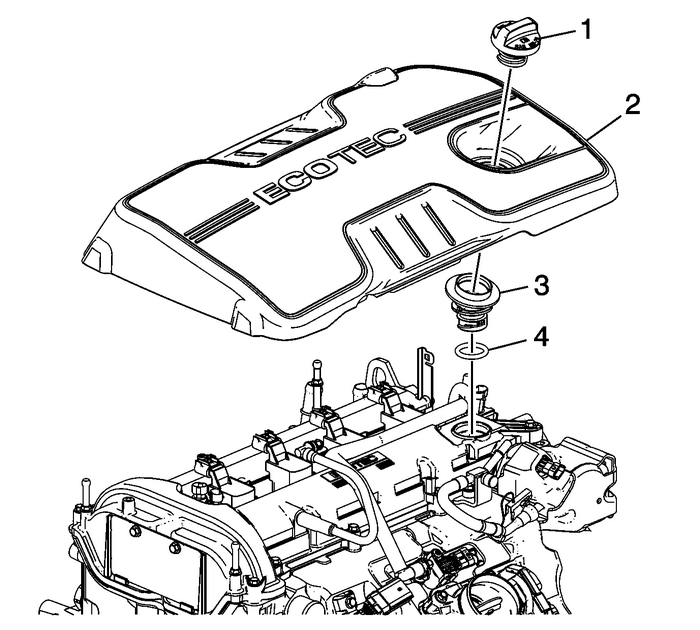
Caution:Never attempt to remove the intake manifold from a hotengine, allow the engine to cool to ambient temperature. The intakemanifold can be damaged if it is removed when the engine ishot.
Remove the oil fill cap-(1).Remove the intake manifold cover-(2).Remove the oil fill tube assembly-(3) andO-ring-(4).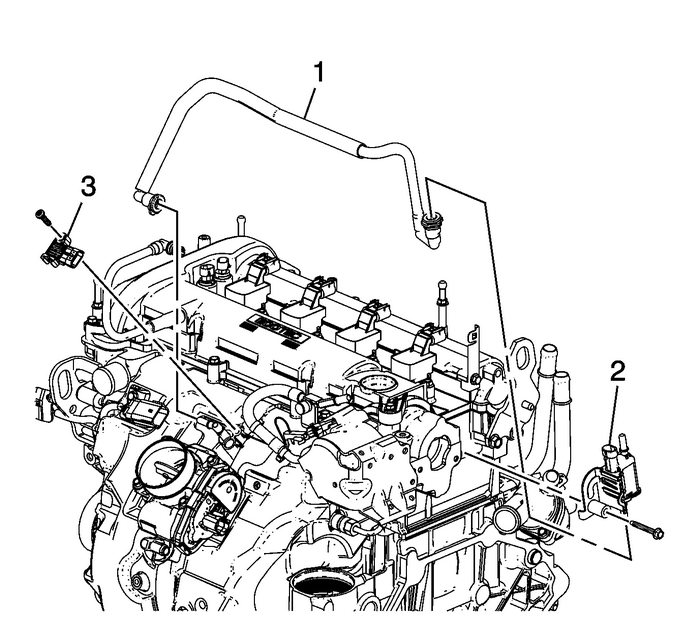
Remove the evaporative-(EVAP) emission canistervalve tube-(1).Remove the EVAP canister valve-(2).Remove the MAP sensor-(3).
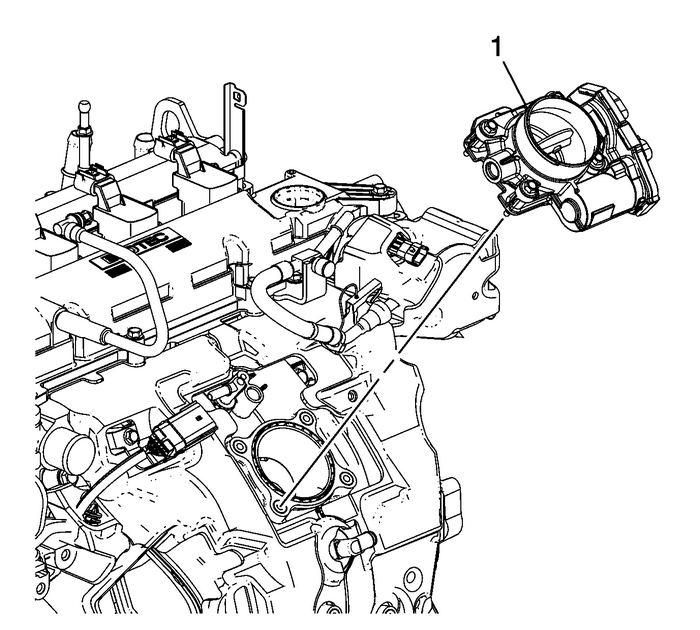
Remove the throttle body-(1).
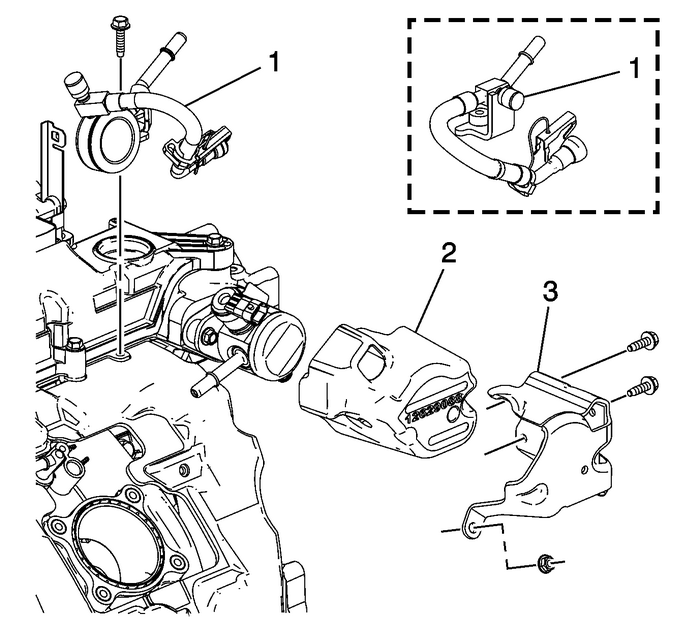
Remove the fuel pump cover nut, bolts, andcover-(3).
Note:The low pressure fuel pipe used is model dependent.
Remove the bracket bolt and low pressure fuel pipeassembly-(1).Remove the fuel pump insulator-(2).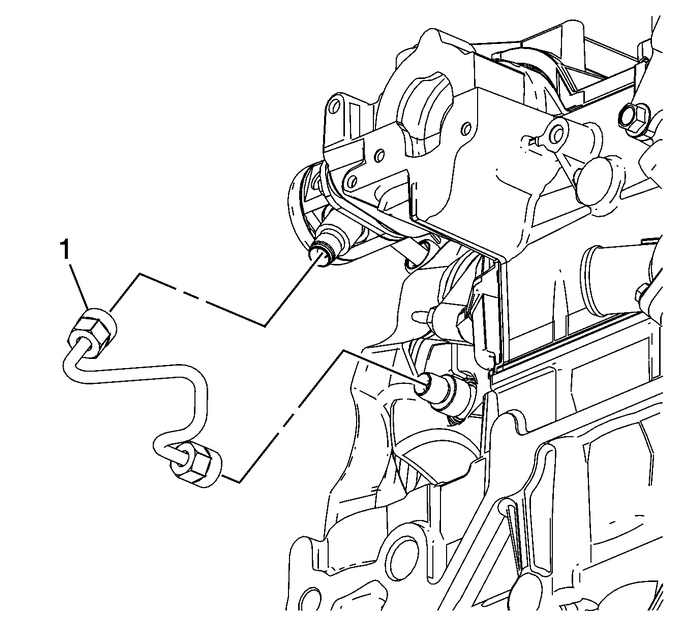
Warning:Fuel that flows out at high pressure can cause serious injuryto the skin and eyes. ALWAYS depressurize the fuel system beforeremoving components that are under high fuel pressure.
Remove and discard the fuel feed intermediatepipe-(1).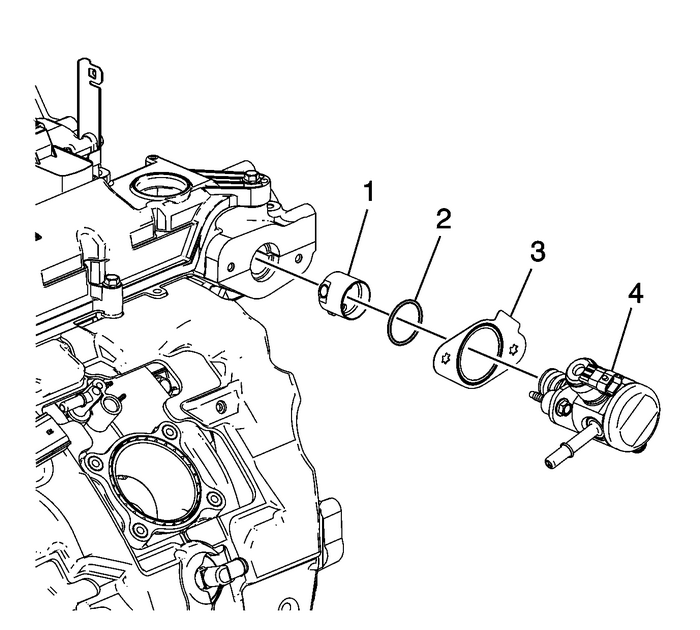
Remove the fuel pump assembly-(4).Remove and discard the fuel pump housingO-ring-(2) and gasket-(3).Remove the fuel pump roller lifter-(1).
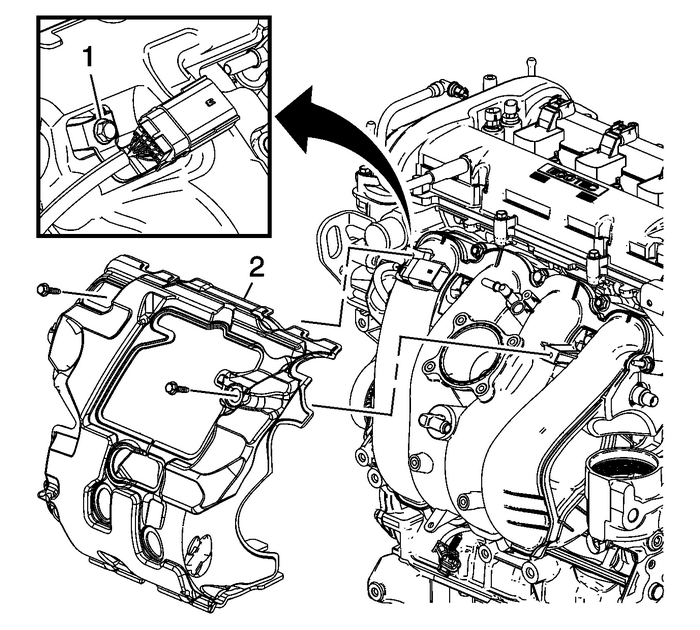
Remove the fuel rail harness connector bracketbolt-(1) and intake manifold insulator bolt.Remove the intake manifold insulator-(2).
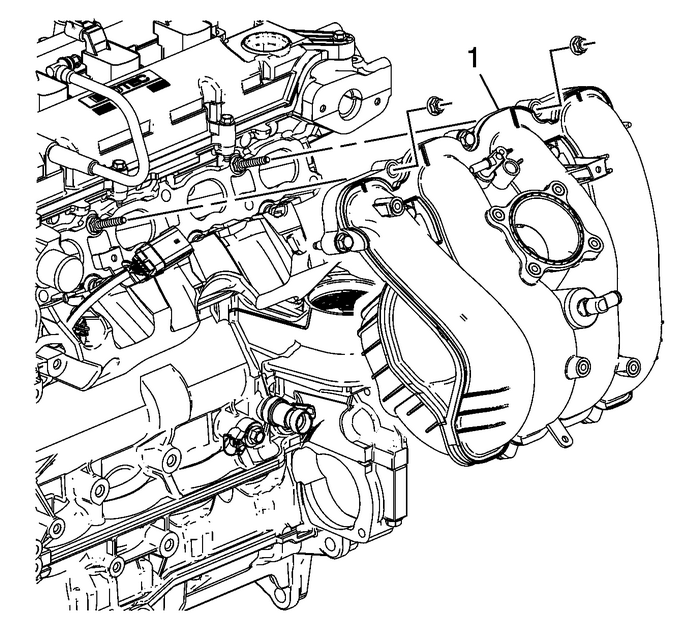
Remove the intake manifold retaining nuts and bolts.Remove the intake manifold-(1).If the intake manifold needs to be replaced, transfer thethrottle body to the new intake manifold.
 Three-Way Catalytic Converter Damage Caution Emissions Catalytic Converter
Three-Way Catalytic Converter Damage Caution Emissions Catalytic Converter
Caution:In order to avoid damaging the replacement three-waycatalytic converter, correct the engine misfire or mechanical faultbefore replacing the three-way catalytic converter. ...
 Exhaust Manifold Installation (LAF, LEA, or LUK) Exhaust Exhaust Manifold
Exhaust Manifold Installation (LAF, LEA, or LUK) Exhaust Exhaust Manifold
Caution:Refer toFastener Caution.Install new exhaust manifold studs and tighten to 10-Y (89-lb-in).Install the secondary air injection pipe assembly-(1).Install the secondary air injection pipe assemb ...
Other materials:
Throttle Body Assembly Replacement Engine Control Air Metering/Acceleration Throttle
Throttle Body Assembly ReplacementCalloutComponent NamePreliminary ProcedureRemove the air cleaner outlet duct. Refer toAir Cleaner Outlet Duct Replacement1Throttle Body Assembly Fastener (Qty:-4)Caution:Refer toFastener Caution.ProcedureDisconnect the electrical connector.Tighten10-Y(89-lb-in)2Thro ...
